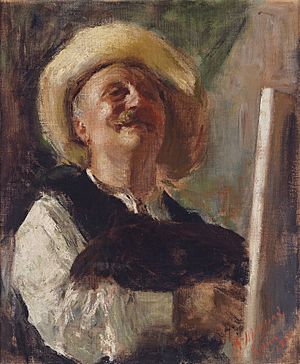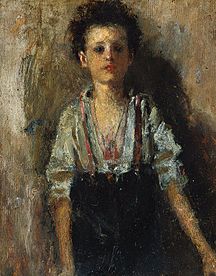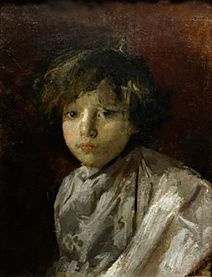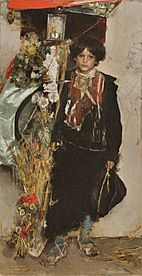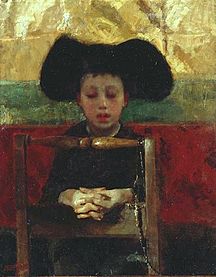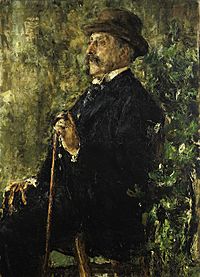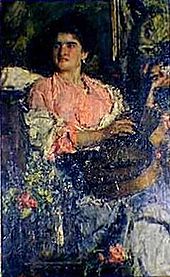Antonio Mancini facts for kids
Antonio Mancini (born November 14, 1852 – died December 28, 1930) was a talented Italian painter. He was known for his realistic paintings, especially of everyday people.
Contents
Early Life and Art Training

Antonio Mancini was born in Rome, Italy. He showed a great talent for art from a very young age. When he was just twelve years old, he was accepted into the Institute of Fine Arts in Naples.
There, he studied under two important teachers: Domenico Morelli and Filippo Palizzi. Morelli was known for painting historical scenes with strong contrasts between light and dark, and bold brushstrokes. Mancini learned quickly from them. By 1872, he was already good enough to show two of his paintings at the famous Paris Salon in France.
His Unique Art Style
Mancini was a leader in the Verismo movement. This was an Italian art style that focused on showing life as it truly was, much like the Realist art movement happening elsewhere.
He often painted ordinary people he saw in the streets of Naples. His favorite subjects included children from poor families, young circus performers, and musicians. For example, his painting Il Saltimbanco (1877–78) shows a young acrobat. It captures how fragile the boy is, as he spends his childhood performing for crowds to earn money.
Meeting Other Artists
In the 1870s, while in Paris, Mancini met famous Impressionist painters like Edgar Degas and Édouard Manet. He also became good friends with John Singer Sargent, another well-known artist. Sargent admired Mancini's work so much that he called him the greatest living painter!
Mancini's later paintings used brighter colors. He also developed a unique technique called impasto, where he applied paint very thickly to the canvas. He was also very skilled at using pastels on paper.
Later Life and Challenges
In 1881, Mancini faced some health challenges. He moved to Rome in 1883 and lived there for twenty years. Later, he moved to Frascati, where he stayed until 1918. During this time, Mancini often struggled financially. He relied on the kindness of friends and art buyers to get by.
After World War I, his life became more stable. This brought a new sense of peace to his artwork. Antonio Mancini passed away in Rome in 1930. He was buried in the Basilica Santi Bonifacio e Alessio on the Aventine Hill.
Where to See His Art
One of Mancini's paintings, The Poor Schoolboy, was shown at the Paris Salon in 1876. This painting, with its realistic subject and dark colors, is a good example of his early work. You can see it today at the Musée d'Orsay in Paris.
You can also find Mancini's paintings in other art galleries in Italy. These include the Galleria Nazionale d'Arte Moderna e Contemporanea in Rome and the Museo Civico-Galleria d'Arte Moderna in Turin.
The first art show in the United States dedicated only to Mancini's work was held at the Philadelphia Museum of Art. This exhibition ran from October 20, 2007, to January 20, 2008. The museum owns fifteen oil paintings and three pastels by Mancini. These were a generous gift from a New York City art dealer named Vance N. Jordan.
Gallery
See also
 In Spanish: Antonio Mancini para niños
In Spanish: Antonio Mancini para niños


